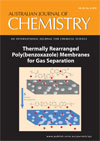
Australian Journal of Chemistry
Volume 69 Number 6 2016
CH15528Sulfides Synthesis: Nanocatalysts in C–S Cross-Coupling Reactions
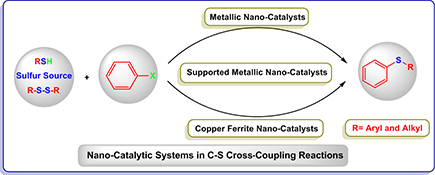
Nowadays, transition metals in nano-size have been transformed into an efficient catalytic tool for the performance of C–S cross-coupling reactions. This review provides a systematic and comprehensive study of recently published breakthroughs on the synthesis of sulphides using metallic nanocatalysts from 2007 to 2015 .
CH15523Thermally Rearranged Poly(benzoxazole) Copolymer Membranes for Improved Gas Separation: A Review
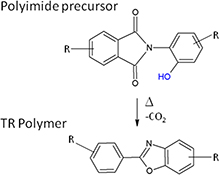
Thermal rearrangement of hydroxyl-containing polyimides in the solid state produces poly(benzoxaole) polymers with unique gas separation properties. However, these suffer from poor mechanical properties that can be overcome through copolymers.
CH15560Metallosupramolecular Chemistry of AgI Complexes with Azobis(2-pyridine) and its Derivatives
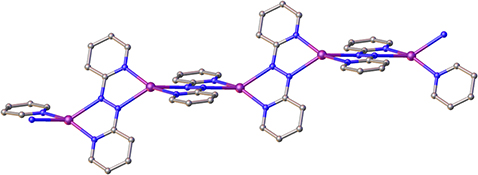
Upon reaction with silver salts three azobis(2-pyridine) ligands are shown to consistently act as di-bidentate bridging ligands, leading to the formation of 1D coordination polymers.
CH15420Palladium-Catalyzed Suzuki Cross-Coupling of 2-Halo-Deazapurines with Potassium Organotrifluoroborate Salts in the Regioselective Synthesis of Imidazo[4,5-b]pyridine Analogues

In this paper, we report the use of potassium organotrifluoroborate salts as nucleophilic organoboron reagents in the Suzuki cross-coupling reactions of 2-halo deazapurines. Regio-isomeric C-2-substituted imidazo[4,5-b]pyridine analogues were synthesized by employing this protocol in good to excellent yields.
CH15466Charge Carrier Transfer in Ta3N5 Photoanodes Prepared by Different Methods for Solar Water Splitting

Inter-particle connectivity is key for electron transfer in photoanodes, while a porous structure is important for the hole transfer in photoanodes.
CH15291Molecularly Imprinted TiO2/WO3-Coated Magnetic Nanocomposite for Photocatalytic Degradation of 4-Nitrophenol Under Visible Light

A molecularly imprinted TiO2/WO3 magnetic nanocomposite was prepared. The composite can degrade 4-nitrophenol under visible light. The composite can be easily recycled by a magnet and has good reusability.
CH15362Novel MII (M = Mn, Fe, Co, Ni) Coordination Assemblies Based on 2-(((1-(Pyridin-n-ylmethyl)-1H-1,2,3-triazol-4-yl)methyl)thio)pyridine Ligands
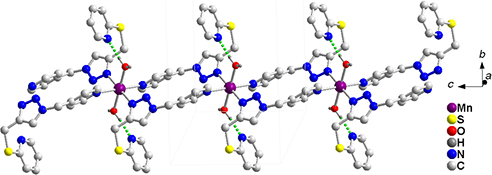
Three 1D polymeric 18-member metallomacrocyles have been obtained using an open-bridged triazolyl ligand as the spacer. Use of an isomeric triazolyl ligand with different picolyl nitrogen orientation, which favours chelate formation, resulted in two mononuclear complexes.
CH15526Friedel–Crafts Chemistry. Part 46. Unprecedented Construction of Tricyclic Pyrazolo[3,4-b]quinolines, -[1,8]naphthyridines, -azepines, -azocines, -pyrido[3,2-g]azocines, and pyrazolo[3,4-b]azonines via Friedel–Crafts Ring Closures
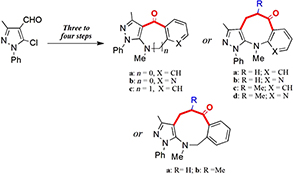
A convergent synthetic protocol for the construction of new fused tricyclic pyrazolo[3,4-b]quinolines, -[1,8]naphthyridines, -azepines, and -azocines via Friedel–Crafts cycliacylations of their synthesized carboxylic acids is described.
CH15527Synthesis and Biological Screening of Silicon-Containing Ibuprofen Derivatives: A Study of Their NF-κβ Inhibitory Activity, Cytotoxicity, and Their Ability to Bind IKKβ

A series of silicon-containing amides and esters derived from ibuprofen was synthesised and screened for NF-κβ inhibition. Amides achieved higher inhibition values and were more potent NF-κβ inhibitors than ibuprofen. The determination of their cytotoxicity and a molecular docking calculation of the silicon-containing derivatives on IKKβ is also reported.
CH15208Study on Pyrrole 4-Pyrazoline Derivatives: Experimental and Quantum Chemical Approaches
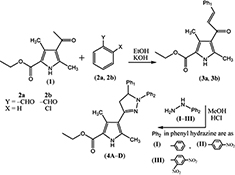
A series of pyrrole 4-pyrazoline biheterocyclic derivatives have been synthesized and studied using experimental IR, UV, 1H and 13C NMR spectroscopic analyses along with density functional theory calculations using the B3LYP functional with 6–311+G (d,p) basis set. The global, local reactivity, and thermodynamic parameters support the analyses. All the experimental findings correlate well with the theoretical results.
CH15417Self-Assembled Mace-Like Fe3O4 Nanostructures as a Lithium–Air Battery Cathode Material
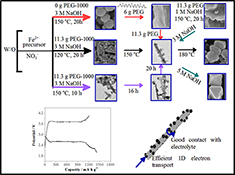
Mace-like Fe3O4 nanostructures were synthesized via a facile microemulsion-mediated solvothermal method. The effects of various reaction conditions on the morphology and structure of Fe3O4 products were investigated. The lithium–air battery based on mace-like Fe3O4 nanostructures exhibited a high discharge capacity of 1427 mA h g−1 in ambient air.
CH15516Enhanced Catalytic Activity of Carbon Nanotubes for the Oxidation of Cyclohexane by Filling with Fe, Ni, and FeNi alloy Nanowires
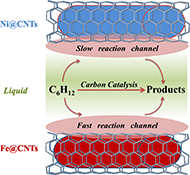
New catalysis applications of nanocarbon materials pave the way towards greener chemical syntheses. For the catalytic oxidation of cyclohexane in liquid phase, the higher activity was obtained over Fe@CNT compared with that of Ni@CNT. The enhanced catalytic performance can be attributed to a combined contribution of thin walls of the CNTs and confined electron-donating metals, which are favourable to electron transfer on the surfaces of CNTs.
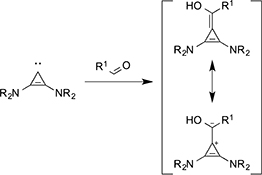
Stable cyclopropenylidenes have proven to be efficient organocatalysts for several types of reactions on carbonyl substrates. This new family of carbenes holds great potential to compete with the very popular and well-studied N-heterocyclic carbenes for new applications in organic chemistry.



